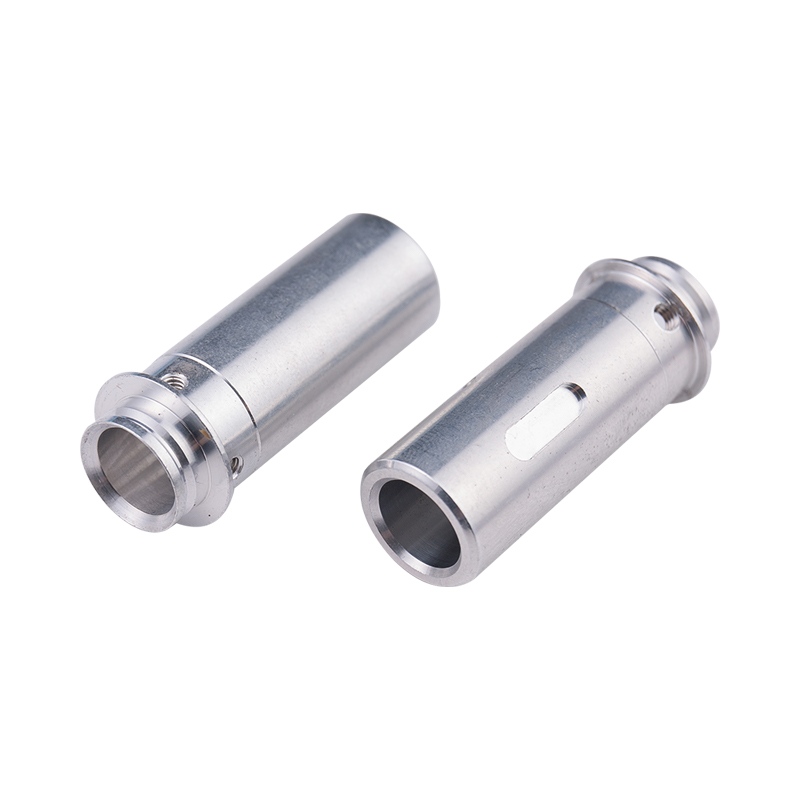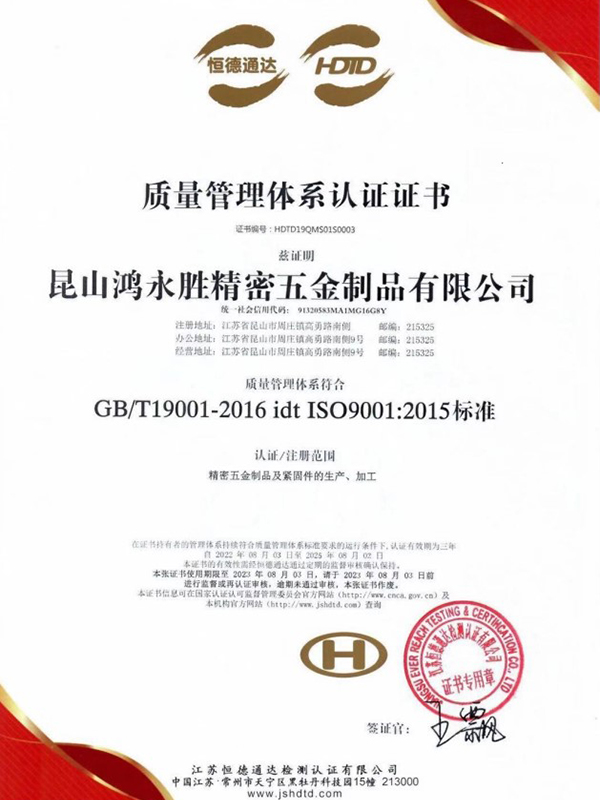Carbon Steel Bolt Supplier Guide: What Buyers Should Look For Selecting the right supplier for carbon steel bolts affects product performance, safety, and long-term cost. This guide breaks down the p...
READ MOREThe company has obtained two quality system management certificates of ISO9001:2015 and IATF16949:2016.
At present, the company has been for Japan, Sweden, the United States, Singapore, Malaysia, Hong Kong and the Pearl River Delta and many other customers to provide services, now the main customers are: Japan Sharp (SHARP), Japan SMC, Japan Panasonic (Panasonic), the Swedish automobile VOVOL, etc., all the fixed assets investment of more than 30 million dollars, welcome friends from all walks of life to the factory to visit, study, consulting and come! We welcome friends from all walks of life to visit our factory, investigate, consult and come to us for sample processing.
We are looking forward to establishing a good business partnership with you with mutual trust and reciprocity!
-
-
Introduction: The Foundation of Mechanical Systems In the intricate world of modern manufacturing and engineering, machined parts form the fundamental building blocks of virtually every mechanical sys...
READ MORE -
Why Structural Integrity Matters In construction, machinery, and other industrial applications, structural integrity is crucial for safety, performance, and longevity. One of the key elements in ensur...
READ MORE -
Introduction to Stainless Steel Fasteners Stainless steel fasteners are widely used in construction, machinery, and industrial applications due to their corrosion resistance and durability. Among them...
READ MORE
How does the steel air flow control valve body ensure tight sealing and leakage prevention?
The steel air flow control valve body ensures tight sealing and leakage prevention through several key features and mechanisms:
Precision Machining: The valve body undergoes precise machining processes to achieve tight tolerances and smooth sealing surfaces. This ensures a snug fit between the valve body and associated components, minimizing the risk of leakage.
Sealing Mechanisms: The valve body may incorporate various sealing mechanisms such as O-rings, gaskets, or sealing compounds to create a secure seal between mating surfaces. These seals are selected based on the specific requirements of the application and the operating conditions of the air flow system.
Pressure Balanced Design: Some valve bodies are designed with pressure-balanced features that help distribute the forces evenly across the sealing surfaces. This helps to maintain consistent sealing performance even under fluctuating pressure conditions, reducing the risk of leaks.
Robust Construction: Steel is known for its strength and durability, providing a sturdy housing for the valve mechanism. The robust construction of the steel valve body ensures that it can withstand the forces exerted during operation without deforming or compromising the integrity of the seal.
Quality Assurance: The manufacturing process of the steel valve body includes stringent quality control measures to detect any defects or irregularities that could compromise sealing performance. This ensures that only properly machined and inspected valve bodies are used in air flow control systems, minimizing the risk of leaks.
Maintenance and Inspection: Regular maintenance and inspection procedures are essential for detecting and addressing any potential issues with sealing performance. This may include periodic replacement of seals or gaskets, as well as visual or pressure testing to check for leaks.
The combination of precision machining, sealing mechanisms, pressure balancing, robust construction, quality assurance, and maintenance practices ensures that the steel air flow control valve body maintains tight sealing and prevents leakage, contributing to the efficient and reliable operation of the air flow system.
How do steel air flow control valve bodies adapt to different operating pressure and temperature ranges?
Steel air flow control valve bodies are designed and manufactured with varying operating pressure and temperature ranges in mind to ensure reliability and durability in a variety of applications. Here are several key factors that determine how a valve body adapts to different operating pressure and temperature ranges:
Material selection and strength design: Steel valve bodies usually use high-strength steel, such as carbon steel or stainless steel. These materials have good mechanical strength and toughness and can withstand high working pressure. During design, an appropriate material grade is selected based on the expected working pressure, and strength calculations are performed to ensure that the valve body will not crack or deform in the worst case scenario.
Temperature adaptability: The material selection of the steel valve body will also consider its heat resistance. Different types of steel have different heat resistance temperatures. For example, stainless steel has better high temperature resistance than carbon steel.
For high temperature applications, special heat-resistant steels or special heat treatments may be required to improve their stability and oxidation resistance at high temperatures.
Seal system design: Seal performance will be affected at varying operating pressures and temperatures. Therefore, the valve body will be designed with sealing materials suitable for the corresponding temperature range and ensure that the sealing system can still maintain good sealing performance at high or low temperatures.
Thermal Expansion Compensation: Steel valve bodies undergo thermal expansion or contraction when temperature changes, which may affect the valve's sealing and operating performance. The impact of thermal expansion on valve size and clearance will be considered during design, and corresponding measures will be taken, such as designing appropriate expansion clearances or using thermal compensation mechanisms.
Cooling and heat dissipation design: For high temperature applications, the valve body may require additional cooling or heat dissipation design, such as a cooling water jacket or heat sink, to keep the valve body within a safe operating temperature range.
Pressure grade: Steel valve bodies are classified according to the pressure grade they are used in, such as 150 pounds, 300 pounds, 600 pounds, etc. in the ANSI/ASME B16.34 standard. Each grade has its designed maximum allowable working pressure.
Safety factor: When designing the steel valve body, a safety factor is introduced to ensure that the valve body will not fail immediately even if the normal operating pressure is exceeded. This provides additional protection against potential overvoltage conditions.
Testing and Certification: Steel valve bodies undergo rigorous pressure and temperature testing before leaving the factory to verify performance over the nominal operating pressure and temperature range. In addition, the valve body may be certified according to relevant international standards, such as ISO, DIN or ASME standards.
Through these design and manufacturing measures, the steel air flow control valve body can adapt to different working pressure and temperature ranges to meet the needs of various industrial applications.



 русский
русский Español
Español


